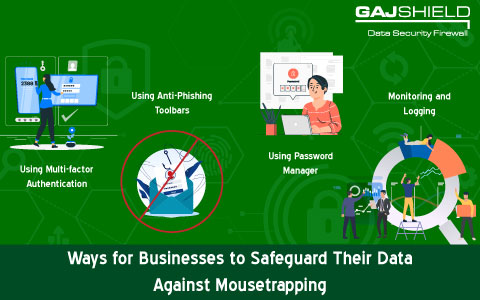Ways for Businesses to Safeguard Their Data Against Mousetrapping
Mousetrapping catches an internet user in its web of endless pop-ups, which prevents them from exiting a malicious website. It is a technique implemented by unethical online marketers to trap the users on the site by disabling their "back" button. They flood the victim's screen with endless pop-up windows. To prevent internet users from leaving the website, the scammers may also relaunch the website to another page that is difficult to close or redirect them to different pages. At times users may be forced to make a call-to-action in which they are pushed to download some sort of file, accept some terms or sign up for something as a last resort to be able to exit the site. If a user succumbs to it, their data can be hacked.

How to Safeguard Against Mousetrapping
1. Using Multi-factor Authentication
Any protected data should require sign-in authentication through email, phone or code verification before being given access.
2. Using Anti-Phishing Toolbars
To safeguard their data, businesses should use an anti-phishing web extension. It is a toolbar that checks and monitors anything a user clicks in real-time and blocks any possible attacks or threats.
3. Using Password Manager
A password manager will help generate complex passwords that are very unlikely to get hacked. It also facilitates encrypting email, username and passwords so that an outsider or a cyber criminal cannot hack into it.
4. Monitoring and Logging
Understanding the threat's objectives should be an organisation's major concern if a threat is detected. They can deploy a fake website to capture a threat actor and understand how they function. Monitoring a threat live and understanding how it operates can help businesses deploy more robust security solutions and prevent future traps.
Mousetrapping targets users and makes it impossible for them to leave the malicious websites. Understanding how they work and safeguarding against them is an important step for businesses.
Gajshield’s data security solutions can help businesses easily counter issues such as mousetrapping.
Kindly contact us to know more about our data security solutions.
Get In Touch With Us
Subscribe to our Newsletter
2025 © GajShield Infotech (I) Pvt. Ltd. All rights reserved.
